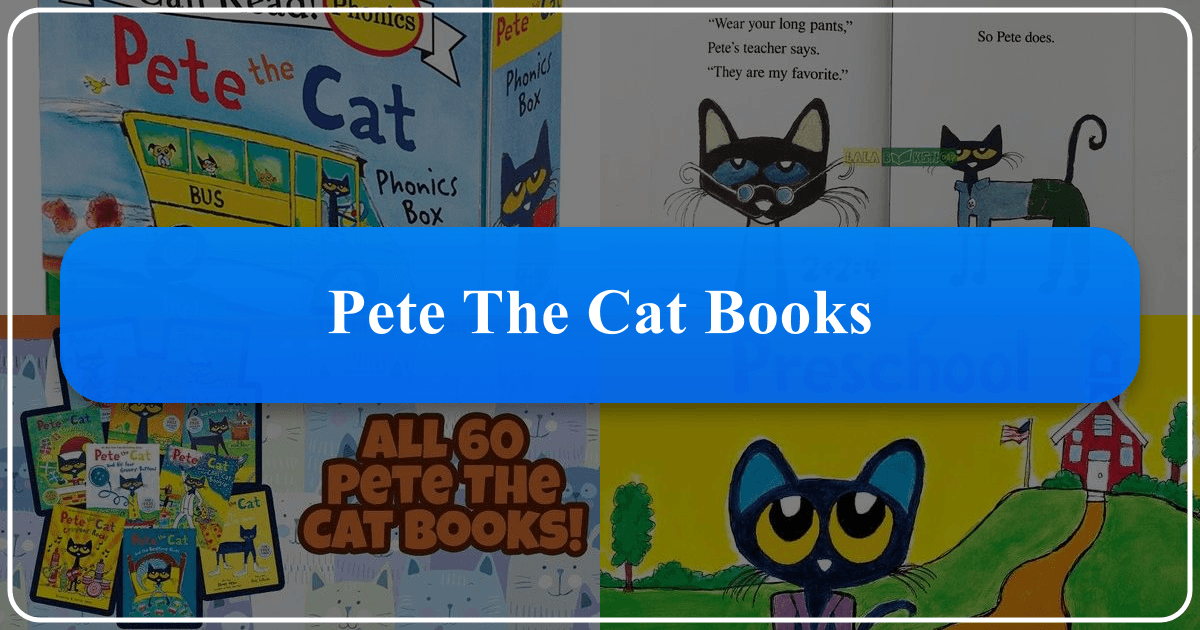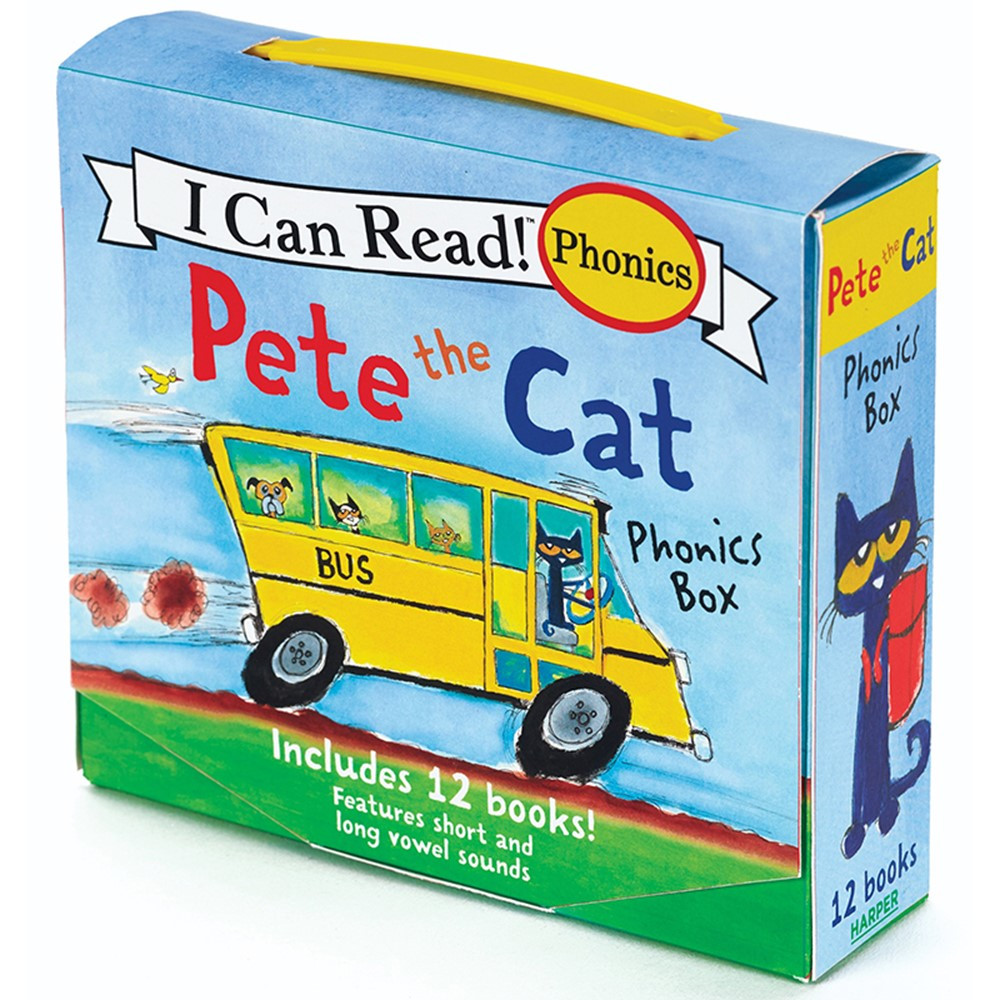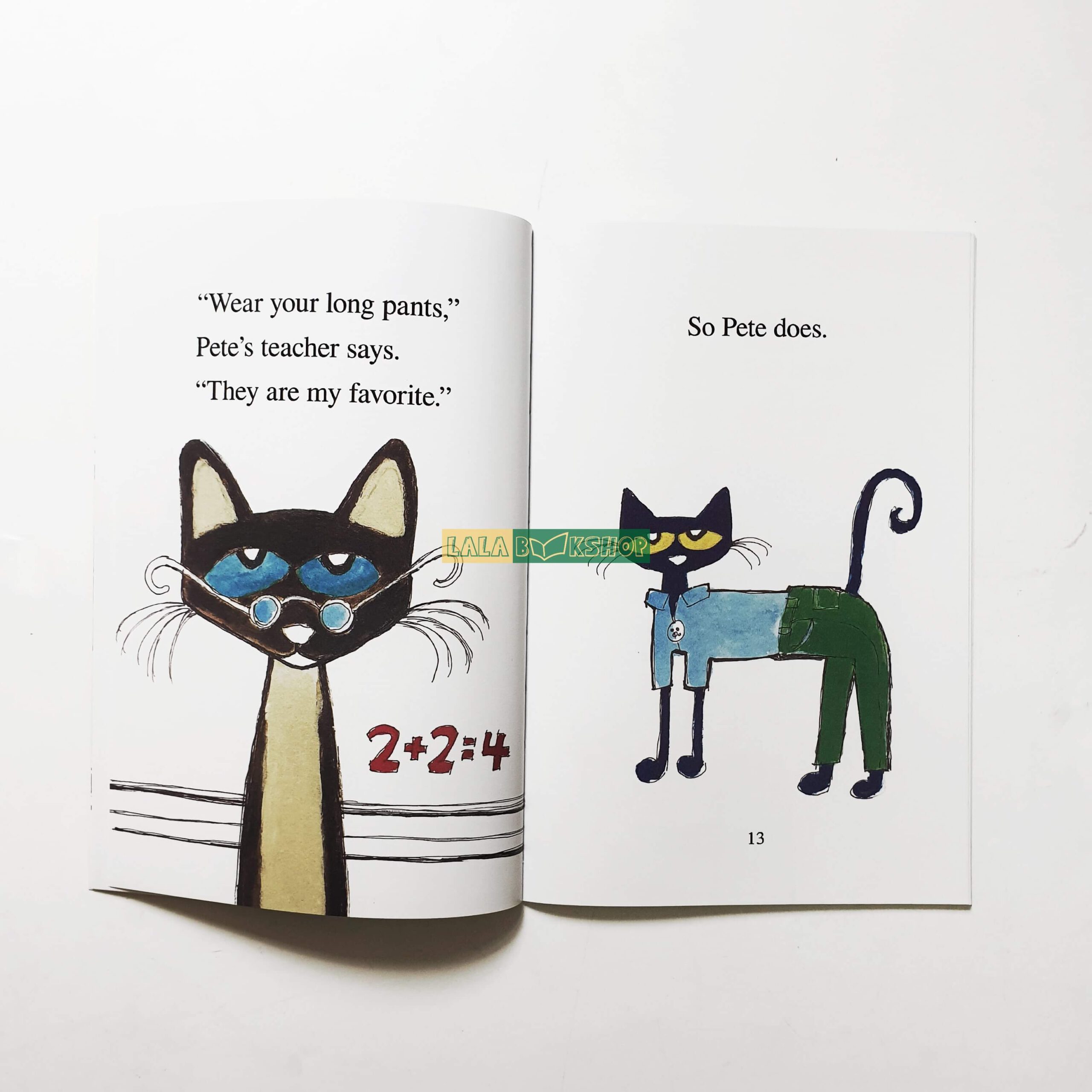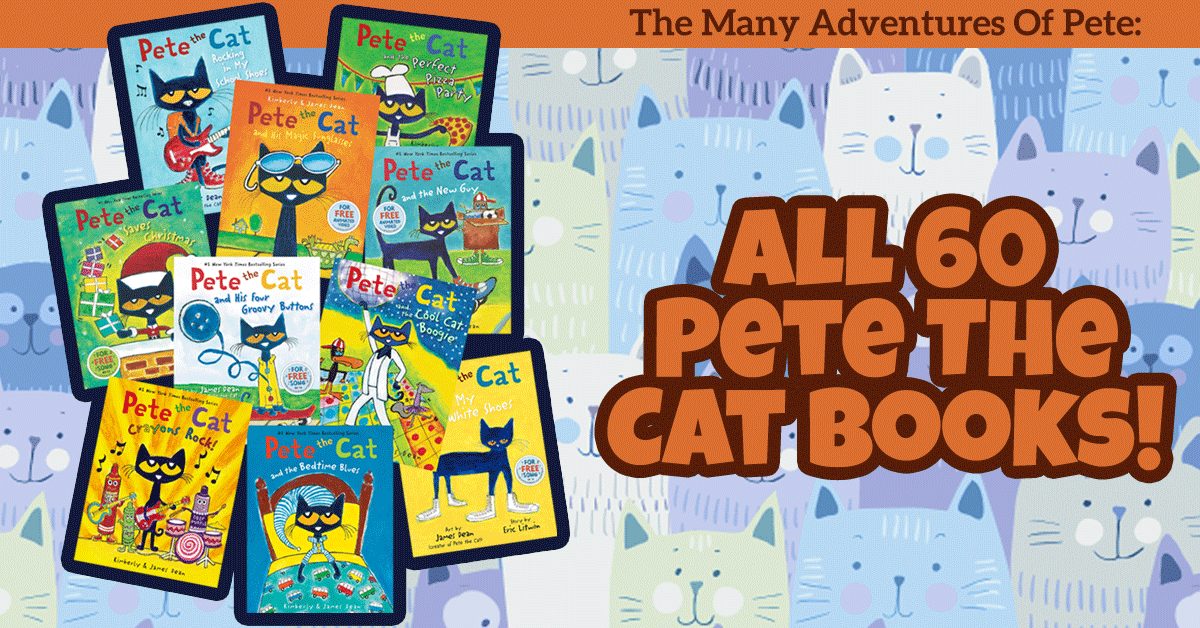Pete the Cat Books: A Comprehensive Guide

The Pete the Cat book series, created by James Dean and Eric Litwin (initially), has captured the hearts of young readers and their parents alike. Its simple, repetitive text, catchy tunes, and charming illustrations make it a perfect introduction to the world of reading for preschoolers and early elementary school children. But the Pete the Cat phenomenon extends far beyond just the books themselves. This comprehensive guide explores the various aspects of the series, delving into its genres, literary impact, and educational value, as well as its broader cultural presence.

The World of Pete the Cat: Genres and Themes
The Pete the Cat books primarily fall into the genres of picture books and children’s literature. However, their unique approach transcends simple categorization. Each book typically centers around a specific adventure or life lesson, often presented in a song-like format. This musicality adds another layer of engagement, transforming the reading experience into a singalong. The storylines usually involve simple, relatable situations that resonate with young children. These include dealing with minor setbacks (“Pete the Cat: I Love My White Shoes”), navigating the first day of school (“Pete the Cat: Rocking in My School Shoes”), or confronting feelings of sadness or anxiety (“Pete the Cat and the Bedtime Blues”). This focus on everyday experiences allows children to connect with Pete’s calm and positive attitude, fostering a sense of emotional intelligence and resilience.

Classic Pete the Cat Stories and Their Enduring Appeal
The initial four books—Pete the Cat: I Love My White Shoes, Pete the Cat: Rocking in My School Shoes, Pete the Cat and His Four Groovy Buttons, and Pete the Cat: Saves Christmas—laid the foundation for the series’ immense popularity. These classics established the core characteristics of Pete: his consistently cheerful demeanor, his love of music, and his ability to approach challenges with a relaxed, positive outlook. This consistent personality makes Pete an appealing and reliable character for children, providing a sense of stability and comfort. The simple repetition within the text further aids young readers in developing their reading skills and confidence. The consistent use of rhyming and rhythm creates a musicality that captures children’s attention and helps them to internalize and retain information.

Bestsellers, New Releases, and Critical Reception
The Pete the Cat series boasts numerous bestsellers, with many titles consistently ranking highly on children’s literature charts. The success is partly due to effective marketing, but predominantly rests on the books’ inherent appeal to a broad audience of young children and parents. New releases continue to be published, maintaining the series’ relevance and expanding the universe of Pete the Cat’s adventures.
While there’s a general consensus that the series is well-received by both children and parents, book reviews often highlight varying levels of complexity across the books. Some might find certain narratives more engaging than others.
The Creative Minds Behind Pete the Cat: Authors and Illustrators
The genesis of Pete the Cat is a fascinating collaborative story. Initially, American artist James Dean, known for his self-published book The Misadventures of Pete the Cat (2006) created the titular character. He later partnered with American storyteller and musician Eric Litwin, who brought the character to life with his uniquely lyrical storytelling style, often incorporating songs and musical elements into the narratives. Their collaborative efforts produced the initial four highly successful Pete the Cat books. However, creative differences led to the dissolution of their partnership in 2012.
Since then, James Dean and his wife, Kimberly Dean, have continued to write and illustrate the ever-expanding Pete the Cat universe, maintaining the series’ core values but adding layers of complexity and new storylines as the target age range broadens. Their combined talent ensures the continuation of Pete’s engaging adventures and reinforces the series’ success.
Writing Styles and Inspirations
Eric Litwin’s writing style is characterized by its simplicity, repetition, and musicality. His use of song-like structures and repetitive phrases aids in young children’s comprehension and memorization. Litwin’s inspiration often comes from folk songs and folktales, demonstrating a keen understanding of the enduring appeal of simple, powerful narratives.
James and Kimberly Dean’s illustration style is consistently bright, colorful, and childlike. This complements the simplicity of the text. The illustrations’ expressive qualities enhance the narrative, amplifying emotional engagement and allowing for broader interpretation among young readers. Their design choices communicate Pete’s calm, accepting attitude, which also serves as a powerful subtext for the books’ messages.
Reading, Learning, and the Lasting Impact of Pete the Cat
The Pete the Cat books offer significant educational value for young children. The repetitive language aids in vocabulary development and early literacy skills. The simple plots help children to comprehend narrative structure and follow storylines. The series also imparts valuable life lessons, such as embracing mistakes, maintaining a positive attitude in the face of adversity, and the importance of kindness. The books foster positive reading habits by making reading fun and accessible for young children. The catchy songs and upbeat stories encourage repeated engagement, making them valuable tools in instilling the love of reading from a very early age.
Educational Value and Life Lessons
The Pete the Cat books have proven extremely effective in promoting early literacy skills and encouraging emotional development. The rhythmic, repetitive language of the books makes them easily memorable and promotes phonetic awareness. The books’ simplicity makes them accessible even for very young children, allowing them to build their confidence in their own reading abilities. Importantly, the series’ emphasis on positive emotions and problem-solving builds resilience and empathy in young readers. They learn to view setbacks as opportunities for growth and to handle challenging situations with grace and understanding.
Summaries and Key Themes Across the Series
Each Pete the Cat book presents a distinct story, focusing on different situations and life lessons. However, common themes like positivity, problem-solving, acceptance, and the power of friendship weave through the entire collection. Summarizing individual books is straightforward due to their concise narratives; however, highlighting the overarching themes is crucial to understanding the series’ lasting contribution to children’s literature.
Pete the Cat in the Wider World: Cultural Impact and Adaptations
The Pete the Cat series has transcended its role as mere children’s books. It has achieved considerable cultural impact, evidenced by its numerous adaptations and the communities it has fostered.
Literary Influence and Award Recognition
The series’ success has undoubtedly influenced other children’s authors, inspiring a trend towards simpler, more musically inclined stories that focus on emotional intelligence and positive messaging. The books have received various accolades and awards, reinforcing their significance in the world of children’s literature.
Adaptations to Other Media
The popularity of Pete the Cat has extended beyond the printed page. The series has been successfully adapted into an animated television show, which has been lauded for its faithfulness to the original books’ tone and messages. This adaptation has introduced Pete the Cat to even more young readers and viewers worldwide. The series has also inspired theatrical productions, expanding its reach further and establishing its place in the landscape of children’s entertainment. Tie-in books based on the TV series have also expanded the franchise.
Communities and Fan Engagement
The Pete the Cat books have generated a significant online community of fans, fostering engagement through social media, fan art, and shared experiences. This engagement demonstrates the series’ power to connect with its audience on a deeper level, creating a lasting legacy in children’s culture.
In conclusion, the Pete the Cat books represent more than just a series of children’s stories. They are a cultural phenomenon encompassing literature, music, animation, and community building. Their simplicity, musicality, and positive messaging make them valuable tools in fostering early literacy, emotional intelligence, and a love of reading in young children. Their lasting impact on children’s literature and culture ensures that Pete the Cat will continue to groove his way into the hearts of young readers for years to come.